Seoul is a colorful city known for its shopping malls, colorful street markets, beautiful parks, and vibrant energy. In this travel cost guide, we'll cover everything you need to know to plan your travel budget and have an amazing trip without spending too much. This guide includes average trip costs from previous travelers, typical hotel prices, food and dining costs, entertainment and sightseeing prices, and information about transportation. Whether you're exploring the museums, eating the delicious cuisine, or enjoying the nightlife, we'll help you plan the ideal trip to Seoul that stays within your budget.
How much does it cost to travel to Seoul?
A typical traveler spends $128 (₩178,547) per day on a trip to Seoul. This is the average daily price for a vacation in Seoul based on the expenses of other visitors.
Past travelers have spent, on average for one day:
- $51 (₩71,388) on meals
- $15 (₩21,287) on local transportation
- $107 (₩149,579) on hotels
A one-week trip to Seoul for two people costs, on average, $1,790 (₩2,499,658). This includes accommodation, food, local transportation, and sightseeing.
All of these average travel prices have been collected from other travelers to help you plan your own travel budget.
-
One Week
Per person
$895
₩1,249,829
-
2 Weeks
Per person
$1,790
₩2,499,658
-
One Month
Per person
$3,835
₩5,356,410
-
One Week
For a couple
$1,790
₩2,499,658
-
2 Weeks
For a couple
$3,580
₩4,999,316
-
One Month
For a couple
$7,670
₩10,712,820
How much does a one week, two week, or one month trip to Seoul cost?
A one week trip to Seoul usually costs around $895 (₩1,249,829) for one person and $1,790 (₩2,499,658) for two people. This includes accommodation, food, local transportation, and sightseeing.
A two week trip to Seoul on average costs around $1,790 (₩2,499,658) for one person and $3,580 (₩4,999,316) for two people. This cost includes accommodation, food, local transportation, and sightseeing.
Please note, prices can vary based on your travel style, speed, and other variables. If you're traveling as a family of three or four people, the price per person often goes down because kid's tickets are cheaper and hotel rooms can be shared. If you travel slower over a longer period of time then your daily budget will also go down. Two people traveling together for one month in Seoul will often have a lower daily budget per person than one person traveling alone for one week.
A one month trip to Seoul on average costs around $3,835 (₩5,356,410) for one person and $7,670 (₩10,712,820) for two people. The more places you visit, the higher the daily price will become due to increased transportation costs.
Is Seoul expensive to visit?
In Seoul, budget travelers spend $50 (₩69,115) per day on average, mid-range travelers spend $129 (₩178,547) per day, and luxury travelers spend around $341 (₩474,110) per day. These costs are calculated from the reported expenses of previous travelers to Seoul.
Seoul is a large city with many activities, sights, and attractions. You'll spot travelers with all sorts of budgets and styles, each soaking in what this fantastic destination has to offer. You'll find a wide array of accommodation options, such as luxury hotels, mid-range places, or budget-friendly hostels.
Seoul can certainly rack up expenses, but there are strategies to minimize costs, including eating at less expensive restaurants and taking public transit.
Within Asia, Seoul is a somewhat more expensive destination compared to other places. It is in the top 25% of cities in Asia for its travel costs. While some cities in the region are more expensive, Seoul is generally more expensive than most.
For more details, and to find out if it's within your travel budget, see Is Seoul Expensive?
How much money do I need for a trip to Seoul?
The average Seoul trip cost is broken down by category here for independent travelers. All of these Seoul travel prices are calculated from the budgets of real travelers. Also, you can see more details at How much does a trip to Seoul cost?
Seoul on a Budget
|
Category
|
Budget
|
Mid-Range
|
Luxury
|
Accommodation1
For 1 person in double occupancy
|
$21
(₩29,652)
|
$54
(₩74,789)
|
$134
(₩187,616)
|
|
Local Transportation1
|
$5
(₩7,548)
|
$15
(₩21,287)
|
$48
(₩66,389)
|
|
Food2
|
$20
(₩27,572)
|
$51
(₩71,388)
|
$136
(₩189,730)
|
|
Entertainment1
|
$9
(₩13,128)
|
$26
(₩36,419)
|
$79
(₩110,466)
|
|
Alcohol2
|
$2-7
(₩3,364-10,093)
|
$6-18
(₩8,331-24,993)
|
$14-43
(₩20,005-60,015)
|
Realistic Expectations for Your Travel Budget
Setting realistic expectations for your travel budget is important. Many people assume they can visit Seoul on a minimal budget, but most find that style of travel to be uncomfortable. Think about what makes a vacation enjoyable for you. Do you like staying in budget hostels, regular hotels, or high-end resorts? Do you want to experience the local attractions? Do you enjoy dining out? Your budget and itinerary will be determined by your answers to these questions.
Who Exactly is a Budget Traveler?
You might think that you're a budget traveler. But unless you're willing to eliminate a lot of comforts from your trip, prepare to spend a lot more than the daily average of $50 that backpackers often get by on.
Young backpackers often get away with this shoestring budget, but it usually involves staying in hostel dorms, eating at the cheapest restaurants or fast food places, taking public transit or walking, and only visiting free attractions.
Luckily, Seoul offers plenty of hostels, including Zzzip Guesthouse in Hongdae, Time Travelers Relax Guesthouse Seoul, and G Guest House Itaewon In Seoul. Staying at hostels like these means you can enjoy affordable dorm accommodation along with a lively social vibe, though amenities might be minimal. The city boasts excellent public transit, allowing budget travelers to skip costly taxi or Uber fares. Food is also a highlight for all types of visitors to Seoul, but budget travelers often dine on street food or cook meals in their hostel, so they may not always experience the delicious cuisine.
Is Your Travel Style Average?
As a couple or family looking for fun, you're likely to choose a mid-range hotel, dine at popular restaurants, and explore the major museums and attractions with entry fees. Many visitors to Seoul are keen to visit the prominent attractions, museums, sights, and landmarks. After all, most activities do cost money. Therefore, it's sensible to expect your daily budget to be approximately $129 per person, per day.
Seoul offers a diverse selection of hotels and vacation rentals. If you're traveling with companions, you can share a hotel room with a partner, friend, or your kids, making it easier on your wallet. Families should look for hotels and restaurants that are family-friendly. Metro Hotel Myeongdong is an excellent option for kids, and Pacific Hotel Seoul is another fantastic choice. For more family and couple-friendly accommodations, check out our hotel guide for Seoul here.
Dreaming of a Stylish Getaway?
If you're used to premier amenities and elevated service, prepare to spend about $341 per day. Choosing comfortable hotels, dining at award-winning establishments, indulging in extravagant excursions, and relying on taxis or private drivers to explore the city will demand a higher price range. Also, higher-end tours are common with luxury travelers, such as Flexible Private Guided Tour in Seoul - offered by Viator.
Accommodation Budget in Seoul
In Seoul, hotel prices can swing drastically. Higher-end hotels offer more luxury, but come at a cost, especially in peak summer season when prices are higher. Off-season prices are more reasonable, averaging $45, but during peak season they jump to an average of $84. You can find budget options starting at $26 up to luxury rates at $198. Hostels are typically cheaper, especially dorms. Book early and avoid peak season to save money.
Calculated from travelers like you
The average price paid in Seoul for two people for a typical double-occupancy hotel room is $107 (₩149,579). For one person sharing a room, the average price paid for a hotel room is $54 (₩74,789) per night. These costs are from the reported spending of actual travelers.
Looking for a hotel in Seoul? Prices vary by location, date, season, and the level of luxury. See below for options.
The most affordable highest rated hotels in Seoul include:
- Pacific Hotel Seoul starting at $64
- Marriott Executive Apartments Yeouido Park Centre - Seoul starting at $167
- Orakai Insadong Suites starting at $87
- Royal Hotel Seoul starting at $74
- Seoul Garden Hotel starting at $53
Seoul features a wide selection of places to stay, as it is a large city. From budget hostels such as Zzzip Guesthouse in Hongdae to vacation rentals and luxurious hotels, there are options for everyone. However, if you choose to stay in the city center, be ready for higher prices while enjoying the convenience of public transit and nearby attractions.
With Seoul's good public transit, staying on the outskirts of the city is possible to save money, but the transportation costs and commute time could add up quickly.
Seoul is family-friendly, so finding a larger apartment or more spacious accommodation is ideal when traveling with children. It is a big city though, and rooms can be small and a bit cramped.
Many visitors spend up to a week in Seoul. If you're staying for an extended period of time, a vacation rental with a kitchen could be a great option that would allow you to prepare your own meals.
By avoiding the peak summer season and traveling in the low or shoulder seasons, you will be rewarded with lower accommodation prices and fewer crowds.
Many enjoy discovering Seoul by walking, so it's beneficial to stay in a central spot. However, this convenience could lead to increased costs.
Transportation Budget in Seoul
Seoul is a large city, so transportation is key. Luckily, Seoul has a great public transit network. The modern and clean transportation system includes both a subway and buses. To save money, public transit is your best bet, but taxis and rideshares are also available for convenience.
Visitors who like to explore on foot will enjoy their time here. Many neighborhoods are fun to explore on foot but do take note that parts of the city are very hilly and the weather can be bitter cold during the winter months.
Public Transit: 



 (excellent)
(excellent)
Walkability: 



 (great)
(great)
Calculated from travelers like you
-
On average, past travelers have spent $15 (₩21,287) per person, per day, on local transportation in Seoul. The cost of a taxi ride or rideshare service (Uber/Lyft) in Seoul is significantly more than public transportation.
-
Transportation1
Taxis, local buses, subway, etc.
$15
₩21,287
Seoul's subway system travels throughout the city and is convenient to use. It's also the second most used system in the world. There are 18 lines that are distinguished by colors. Signs are written in both Korean and English, and often Chinese and Japanese as well.
The bus system is also very comprehensive. There are four kinds of buses. Yellow buses follow short routes around tourist areas. Green buses travel between neighborhoods and the subway. Blue buses cross town and Gyeonggi (green and red) buses connect different cities.
Taxis are very nice and reliable. The prices are generally reasonable if you're not traveling far. Drivers rarely speak English so it is best to have your destination written down.
When planning to use public transit frequently, don't overlook the potential savings of multi-day transit passes.
Be cautious of pickpockets on buses and trains, as well as in the stations. Remember, Seoul is a bustling metropolis.
Some of the standard transportation options and hotel transfers include:
- Private Airport Transfer: Seoul City to Incheon Airport 1-12 pax for $204 details
- Private Transfer from Seoul to Incheon Cruise Terminal(12 pax) for $190 details
- Seoul Incheon Airport (ICN) to Seoul - Arrival Private Transfer for $65 details
How much does it cost to go to Seoul? Naturally, it depends on the dates. We recommend Kayak because they can find the best deals across all airlines.
The price of renting a car in Seoul will depends on dates, the type of car, the location, and your age. We recommend Kayak because they can find the best deals across all car rental companies.
Listed below are some transit expenses in Seoul, taken from reports by other travelers. These costs offer a snapshot of transportation prices in the city to give you an idea of what to expect. Keep in mind that your costs may differ, especially if you opt for more expensive options like taxis, which typically cost more than public transportation.
-
Subway Card
₩5,000
-
Short Taxi Ride
₩7,000
-
Metro Ride
₩1,350
-
Seoul City Pass Plus
₩10,000
Food Budget in Seoul
The food scene in Seoul is exceptional, and it's a must-try. Be sure to visit local restaurants and savor some of the signature dishes. Food is a cultural obsession here, and you'll find everything from world class street food to award winning restaurants. The dishes are so much more diverse than Korean barbecue and kimchi. Many dishes are very spicy, with popular local foods including gamjatang (pork and potato soup) and jeon (savory pancakes).
Calculated from travelers like you
-
While restaurant and meal prices in Seoul can vary significantly, the average cost of food in Seoul is $51 (₩71,388) per day, per person, based on the spending habits of previous travelers.
-
Food2
Meals for one day
$51
₩71,388
When dining out, the average daily cost for food in Seoul is around $51 (₩71388) per person, with previous travelers spending from $20 to $137. Generally, breakfast and lunch cost less than dinner, but this will depend on the type of restaurant and what you order.
Typical meal prices in Seoul are as follows:
- Breakfast: $5 to $15
- Lunch: $8 to $21
- Dinner: $15 to $36
- Coffee: $4
- Fast Food or Street Food: $8
In Korea, dining is a social event. There are countless restaurants around the city that are filled with crowds having a good time. It can be difficult to locate an English menu so just look around and point out what you'd like to your waiter.
Budget restaurants are easy enough to find. There are street stalls that sell noodles and 24 hr Korean fast food restaurants. Korean barbecue restaurants are also common and delicious.
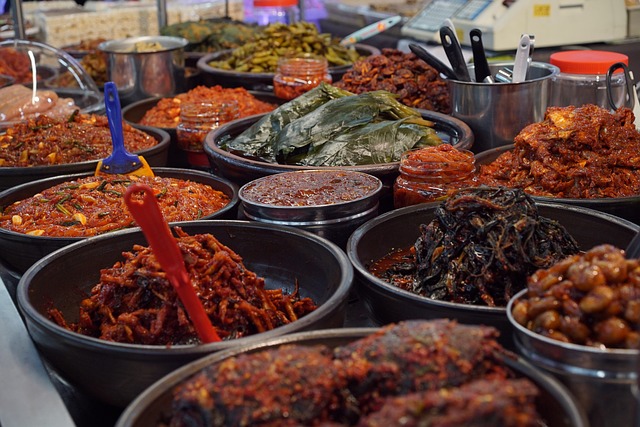
If you choose to eat at nicer restaurants for lunch instead of dinner, you can save some money. Many dining spots in tourist areas or business centers have lunch specials or a 'menu of the day.' These are usually just scaled-down and cheaper versions of their dinner offerings. You might even find a full multi-course gourmet meal at a great price if you know where to look. For dinner, just opt for something light.
When you're on the road with kids, look for eateries that have a kids' menu. This can lead to considerable savings, as those meals are generally less expensive. Some restaurants might not highlight their kids' options, so don't hesitate to ask the waiter before you order.
Numerous hotels offer breakfast as part of the room rate, but some might charge extra for it. The cost and quality can differ from one hotel to another. Being aware of this beforehand can help you determine if you need to allocate additional funds. It could be worth it for a fantastic buffet at the hotel, or you might want to opt for a nearby bakery or cafe that's more budget-friendly.
Pack a water bottle to avoid buying drinks on the go. Plus, it's beneficial for the planet.
If you're thinking about taking a tour, it's wise to check in advance which meals are covered. You may need to cover some of your own food costs, which could increase your overall budget.
If you're looking to experience the culinary culture in Seoul, taking a food tour or cooking class is a terrific way to do it. After all, cuisine is one of the reasons why so many people visit. Some of the best food-related activities here include:
- Royal Seoul Cooking Class in a 100-Year-Old Hanok for $95 details
- Mangwon Market Food tour By Locals; Cheap Eats to Fancy Feast for $53 details
- K-food cooking Japchae Mandu Tteokbokki & Fishcake for $84 details
Typical food prices in Seoul, as reported by previous travelers, are outlined below. These costs offer a snapshot of what meals might cost in the city. Your personal expenses will vary depending on the type of dining experiences you choose and the dishes you order.
Sightseeing and Activities Budget in Seoul
It's no wonder that tourists flock to Seoul, as it is known for its food, music, museums and attractions, and nightlife.
Calculated from travelers like you
-
Sightseeing activities, entertainment, and entrance tickets in Seoul typically cost an average of $26 (₩36,419) per person, per day based on the spending of previous travelers. This includes fees paid for admission tickets to museums and attractions, day tours, and other sightseeing expenses.
-
Entertainment1
Entrance tickets, shows, etc.
$26
₩36,419
There are a good number of attractions worth checking out in Seoul. Head to Gyeongbok-gung, which is the city's most impressive Joseon Dynasty-era palace. Changdeok-gung was built in 1405 and is second in importance to Gyeongbok-gung. Namsan Park is in the center of Seoul and is an ecological island surrounded by urban districts. It's a wonderful place to relax and people watch.
In 1988 Seoul hosted the Summer Olympics. You can visit the Olympic Park which includes a lake, a large field covered with grass, and a square with sculptures. It's a popular spot for young couples to have their wedding photos made. There are also some great running trails throughout the park.
Jongmyo Shrine is probably the most famous shrine in South Korea and is devoted to the royal family members of Korean dynasties. It's an easy place to walk around.
If you have a week in Seoul, you'll find plenty of activities and sights to see. Don't miss the Bukchon Hanok Village, Hongdae, a trip to the DMZ, or Gyeongbokgung Palace.
As Seoul is a large city, there is no shortage of activities that you can enjoy around the city. Check out the Sejong Center for Performing Arts, which is the oldest and one of the largest theaters in downtown Seoul. Also look for events at the Seoul Art Center and KBS Hall.
Amusement parks in the city include Lotte World, Everland (a Korean take on Disneyland), Seoul Land, and Children's Grand Park.
Museums and Attractions:
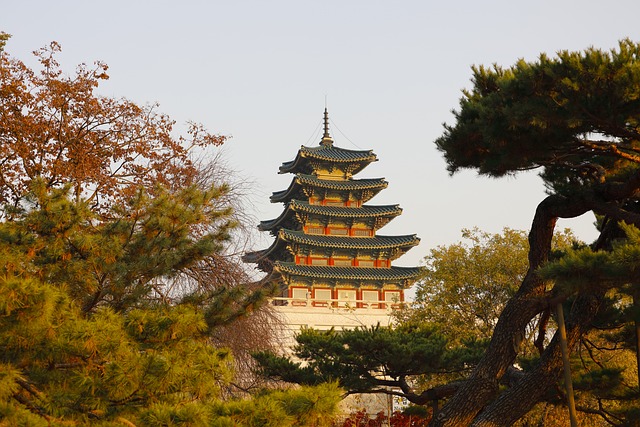 Seoul is known for its famous museums and other landmarks. The museums and landmarks are diverse, with notable sights including N Seoul Tower, the Bukchon Hanok Traditional Village, and the National Museum of Korea.
Seoul is known for its famous museums and other landmarks. The museums and landmarks are diverse, with notable sights including N Seoul Tower, the Bukchon Hanok Traditional Village, and the National Museum of Korea.
Music:
The music scene in Seoul is lively and attracts many fans. K-pop has put the city on the map for music, but you'll actually find a wide range of genres here including rock music and electronic dance music.
Shopping:
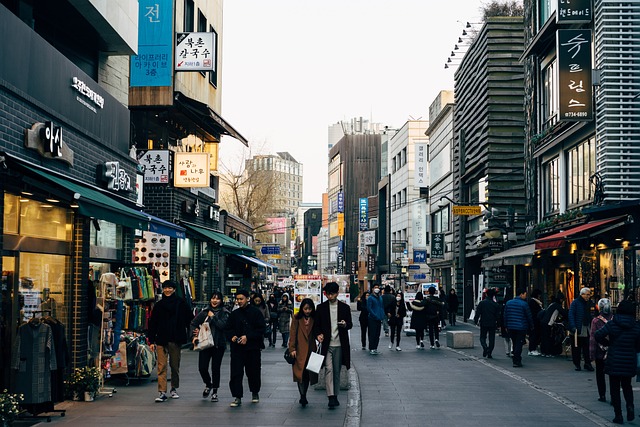 Shopping here is an enjoyable experience. This bustling city offers traditional local items as well as Korean cosmetics and trendy fashion. Although shopping malls are spread throughout the city, some of the most popular shopping areas are found around Myeong-dong and Dongdaemun.
Shopping here is an enjoyable experience. This bustling city offers traditional local items as well as Korean cosmetics and trendy fashion. Although shopping malls are spread throughout the city, some of the most popular shopping areas are found around Myeong-dong and Dongdaemun.
A nice way to explore destinations in Seoul is with local tours that last just a few hours. This way you can see as much as possible in an efficient way with knowledgable guides. Prices vary by the type of activity or tour, the dates, and the size of the group. Here are a few of the highest rated tours by previous visitors:
- K-POP Fan One Day tour from Seoul for $48 details
- Elysian Gangchon Ski Resort One Day Tour for $19 details
- DMZ Tour, 2nd Tunnel & UNESCO Suspension Bridge Tour from Seoul for $67 details
A few typical prices for sights, activities, and entry fees in Seoul are listed below. These actual costs are from real travelers to provide you with an idea how much you might need to spend. Your individual costs will vary based on which activities you do, which attractions or museums you visit, and how often you participate in free or low-cost activities.
-
Palace Tickets
₩8,000
-
Movie Ticket
₩8,000
-
Kimchi Museum
₩3,000
Nightlife Budget in Seoul
With its fun and active nightlife, Seoul attracts visitors eager to experience the local bars, clubs, and parties. This is definitely a work hard/play hard city, with locals working long hours during the day and then partying hard late into the night. The nightlife scene is strong both during the week and on weekends. There are bars, clubs, and lounges that are frequented by locals and tourists alike.
Calculated from travelers like you
-
The average person spends about $12 (₩16,662) on nightlife and alcoholic beverages in Seoul per day. The more you spend on alcohol, the more fun you might be having despite your higher budget.
-
Alcohol2
Drinks for one day
$12
₩16,662
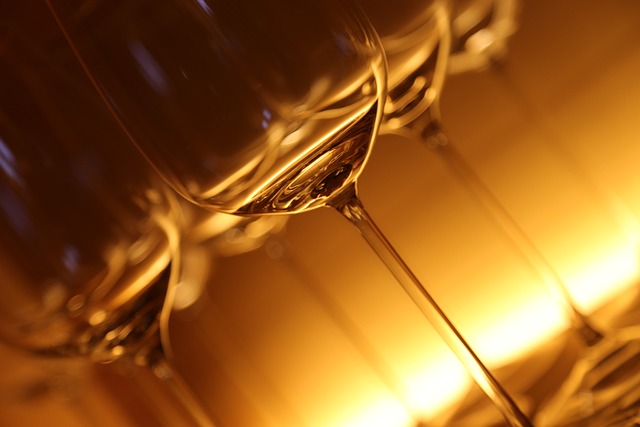
While nightlife can be a blast, skipping a few rounds can significantly lower your travel expenses.
Always be mindful of your surroundings, especially if you're drinking at night. You could become a target for pickpockets or other crimes, so stick with trusted friends and avoid wandering alone.
Nightlife activities and tasting tours are popular in Seoul. A few favorites from other travelers include:
- Rice Wine Tasting with Sommelier - Finest Makgeolli (& Soju) for $42 details
- Itaewon Premium Pub Crawl with Open Bottles for $73 details
- Chunpoong Makgeolli Brewery Tour for $59 details
Travel cost data last updated: Aug 11, 2025
Traveling in Seoul
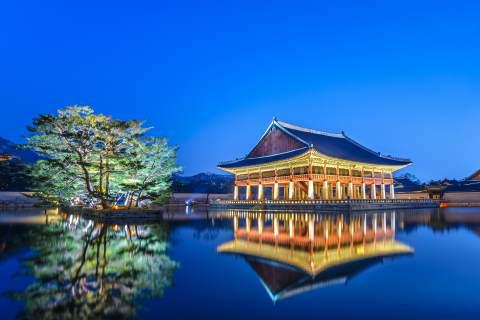 Gyeongbokgung Palace at night, Seoul, South Korea
Gyeongbokgung Palace at night, Seoul, South Korea
With a population of more than 11 million, Seoul is easily the largest city in South Korea. It is also the financial, political, and cultural capital of the country and has much to offer open minded travelers. It is often overlooked by travelers who instead head to Tokyo or Shanghai, but Seoul has a wide range of cultural experiences, food options, and historical sights. Seoul is a city of contrasts with ancient traditions, flashy technology, religious temples and a modern youth culture. It is also more affordable than many of the other Asian metropolis' to which it is often compared. If you're looking for an interesting and different experience that is a little off the tourist trail, Seoul can definitely offer that opportunity.
Seoul's climate is humid continental and subtropical transitional. Summers are hot and humid with the East Asian monsoon occurring between June and September. August is the hottest month with temperatures climbing into the mid 80 degrees Fahrenheit. Winters are cold with temperatures dropping below freezing. Winters are also drier than the summer months and there are, on average, 28 days of snow every year.
Neighborhoods & Around
Seoul is administratively divided into 25 districts and each district can be further split into subdistricts. The Han river splits the city with Gangbuk being the northern and more historical side and Gangnam being the southern and more modern side. The two largest areas are Jongno and Jung in the north and Gangnam in the south. Jungno is where you'll find many of the city's palaces and government buildings. It's one of the main centers of the city and attracts a large number of tourists. Jung is to the south of Jungno and has European style government buildings, the City Hall, and the Bank of Korea. There are also shopping areas and markets. Other notable districts that are north of the river include Seodaemun, Mapo, and Yongsan.
Gangnam, south of the river, is at the modern heart of Seoul. There are skyscrapers, flashing signs, and some of the country's most expensive real estate. Other notable areas south of the river are Songpa, Yeoui-do, and Yangcheon.
Related
Traveling alone to
Seoul or
Tokyo? Are you a
student looking for a hostel in South Korea? Find the
best hostels throughout South Korea.
We've been gathering travel costs from tens of thousands of actual travelers since 2010, and we use the data to calculate average daily travel costs for destinations around the world. We also systematically analyze the prices of hotels, hostels, and tours from travel providers such as Kayak, HostelWorld, TourRadar, Viator, and others. This combination of expenses from actual travelers, combined with pricing data from major travel companies, gives us a uniqe insight into the overall cost of travel for thousands of cities in countries around the world. You can see more here: How it Works.
 Gyeongbokgung Palace at night, Seoul, South Korea
Gyeongbokgung Palace at night, Seoul, South Korea


 Seoul is known for its famous museums and other landmarks. The museums and landmarks are diverse, with notable sights including N Seoul Tower, the Bukchon Hanok Traditional Village, and the National Museum of Korea.
Seoul is known for its famous museums and other landmarks. The museums and landmarks are diverse, with notable sights including N Seoul Tower, the Bukchon Hanok Traditional Village, and the National Museum of Korea. Shopping here is an enjoyable experience. This bustling city offers traditional local items as well as Korean cosmetics and trendy fashion. Although shopping malls are spread throughout the city, some of the most popular shopping areas are found around Myeong-dong and Dongdaemun.
Shopping here is an enjoyable experience. This bustling city offers traditional local items as well as Korean cosmetics and trendy fashion. Although shopping malls are spread throughout the city, some of the most popular shopping areas are found around Myeong-dong and Dongdaemun.
 Budget Your Trip is all about finding out how much everything costs so that you can travel cheaper and longer. Created by avid travelers Laurie and Bryan, our goal is to help you plan your next trip on the right budget. With average daily travel costs that are calculated from the budgets of real travelers, plus an analysis of hotel and tour prices, you can find out how much money you need to plan your next adventure. We also have plenty of travel advice, accommodation reviews, and activity suggestions.
Budget Your Trip is all about finding out how much everything costs so that you can travel cheaper and longer. Created by avid travelers Laurie and Bryan, our goal is to help you plan your next trip on the right budget. With average daily travel costs that are calculated from the budgets of real travelers, plus an analysis of hotel and tour prices, you can find out how much money you need to plan your next adventure. We also have plenty of travel advice, accommodation reviews, and activity suggestions.